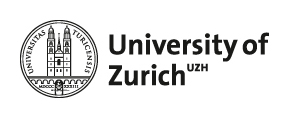Method
How we made our Map
For our web map, we conducted an accessibility analysis using the Modified-Huff-Three-Step Floating Catchment Area method (MH3SFCA). MH3SFCA allows us to calculate accessibility indexes per sample using supply-demand ratios within a given network [21]. Unlike other floating catchment methods, MH3SFCA allows correction for edge effects in walking distances [22] using distance decay functions while also considering potential competition between service areas [21]. The resulting indexes can then be used to show distribution of the quality of accessibility across the area of interest [21].
Our supply is represented by green spaces with an area bigger than 0.5 hectares. Their capacity is assumed to be 50 square meters per person.[23] Our demand is represented by the residential population count. The network is represented by an undirected graph of predefined walkable paths. The walking distance was defined by 300 m normalized using a Gaussian decay function with dmax at 300 and function dmax of 0.01. To improve computational performance in pre-processing, distances bigger than 300 m network distance were calculated using great circle distance using haversine distance.
For our study area we focus on Osaka City, Brisbane City and Toronto City. All three of them show comparable population sizes of around 2.7 million (by 2020) excluding their metropolitan area. As similar they are in population size the more different, they are in terms of area. We assumed that this allows us to showcase the effect of population density on spatial accessibility of green spaces.
Data
Our data for the urban green spaces as well as the pedestrian network originate from Open Street Map (OSM). We used OSMnx to download geometries and create network graphs for each city within the city's borders[24]. For our green spaces we used curated tags while for the network we relied on the default tag selection provided by OSMnx.
Our population data is acquired from WorldPop. WorldPop provides datasets on a per country basis where national census data is constrained to settlement areas[25]. We decided on the most recent common UN adjusted raster dataset with a resolution of 100 by 100 meters, in this case the year 2020. Each raster cell contains the sum of the estimated population count within it[25].
Pre-processing
Pre-processing steps involved (1) downloading and clipping the data within the OSM city borders, (2) applying our predefined filters (i.e., size requirements) (3) matching our green spaces and population counts to the network graph by conversion to points and finally (4) calculating the distances between our supply and demand to subsequently apply the MH3SFCA method.
The resulting Spatial Accessibility Index (SPAI) provides a value on a per population node basis. The higher the SPAI, the better the accessibility of green spaces, while a lower value indicate poorer accessibility. All values are always greater than 0 as only points with supply within a certain distance are considered for the calculation of the SPAI[21].
For visualization purposes the SPAI values of each population node are averaged within a hexagon of 300-meter radius and classified using quartiles.
The resulting map shows the distribution of green space accessibility in each city and can help to highlight potential weak points in green space accessibility. These highlights can then be used to plan targeted measures to improve accessibility of green spaces. As SPAI values are dependent on the population density, SPAI values that are high in one city might be considered low in others. This does not allow for comparison between cities. By calculating the median values of the SPAI among the three cities – what we coin global median – and recategorizing the data according to that global median, we allow for comparison.
